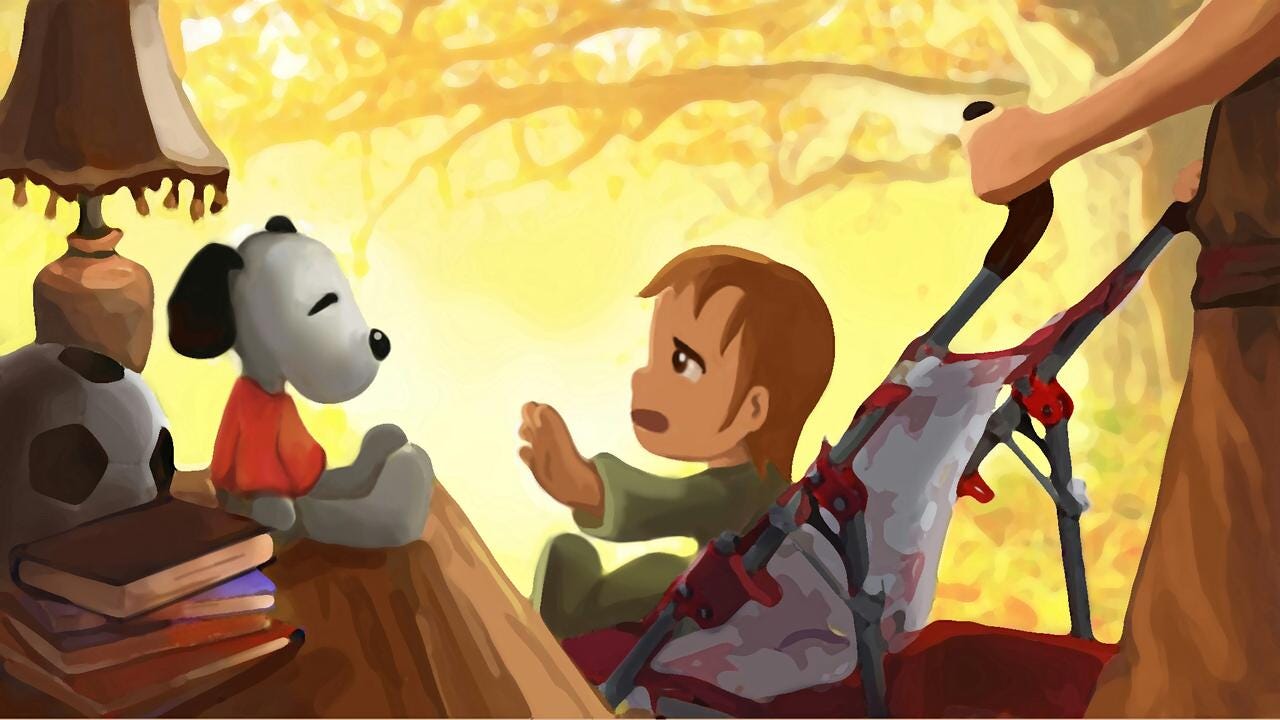The Stuffed Animal That Saved My Life
In my thirty-six years of life I’ve battled borderline personality disorder, struggled with heroin addiction and was nearly shot dead in the street. One tattered toy dog has helped me every step of the way.

Illustrations by Cyan Jenkins
Chloe pulls her right thumb from her mouth, holding me in her palm as she walks out of her mother’s basement and back into the streets. Shivering, I think, “This is it. This is the end of the ride” because she is returning to her useless friend to get more drugs. She almost shot herself in the car this afternoon, and now she fears assault or murder by the only person she has left. She unbuttons the right cargo pocket in her brown corduroy pants and lowers me in. It’s around midnight, and I can feel the chilly air through her pant leg. My permanently seated position allows me to fit, though my shape bulges forth over her skinny leg. Her muscles are all but eaten away by the drugs, yet I hang on and watch the spiral I’ve been sucked into. Sitting inside the eye of a tornado of self-destruction, I know what she’s thinking. That if she dies, by murder or suicide, she will at least have me with her…
- Puppy, May 2006
Keep reading with a 7-day free trial
Subscribe to Narratively to keep reading this post and get 7 days of free access to the full post archives.



